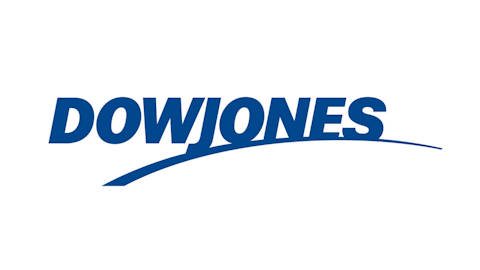There’s no denying that Ford Motor Company (NYSE:F) saw stellar results in its North America region last year.
The car manufacturer boosted revenue by 6.5% in the area, or a full $5 billion over 2011’s sales. And profits rose at an even faster clip. Operating margin in the fourth quarter was the highest since 2000. For the year, profits leapt to 10.4% of sales, much better than the 8.3% operating margin it logged the year before.

Yet, despite calling for a solid year ahead, Ford’s outlook doesn’t include any profitability growth at all. Instead, margins are expected to stay flat, or even dip a bit to 10%, for 2013. What’s keeping that profit level from expanding along with the rest of Ford’s results?
No help from bonuses
For one, the company will be up against a tough comparison from last year. Remember, that outsized profit growth in the fourth quarter of 2012 wasn’t solely powered by the carmaker’s rising pricing power. Price advantages played a big role. In fact, strong pricing trends were responsible for about half of the $1 billion increase in North America’s profits over the year-ago quarter.
But the earnings improvement was also aided by a one-time benefit related to union ratification bonuses, which had depressed profits at the end of 2011. The tailwind from the reversal of that charge won’t be around in 2013, so Ford has to contend with lapping a somewhat inflated profit figure from last year.
No discount from rates
On top of that, Ford’s pension costs are set to rise significantly this year. The ultra-low interest rate environment has the company now looking to lose about $2 billion related to its pension fund in 2013.
Ford is by no means alone here among major U.S companies. Low rates forced Verizon Communications Inc. (NYSE:VZ) to toss an extra $1.7 billion into its pension plan last quarter. Ditto for The Dow Chemical Company (NYSE:DOW) . The company says its dealing with a “massive pension headwind” that added another $2.2 billion to its pension liability.
Having company in this struggle is no consolation to Ford, which plans to contribute upwards of $5 billion to its pension in 2013. That should help it chip away at a funding gap that now sits at $19 billion, or $3.3 billion higher than the year-ago quarter. Bizarrely, Ford is also in a position to benefit if and when rates do rise, by at least removing the need to pony up for these pension outlays each year.
A boost in structural costs
While Ford has no control over long-term interest rates, it is sitting in the driver’s seat with its own cost strategies. The company expects its structural costs to ramp up in the year ahead too, but for good reasons. Increased volume, new product launches, and higher spending on production capacity are all investments that it will be making. And those should benefit future growth, even if they hurt margins in the short term. Running low on factory capacity thanks to overwhelming demand is a good problem to have.
Ford didn’t clue investors in to just how much it expects structural costs to grow this year, except to say that they should rise by more than they did in 2012. That year, Ford saw a $1.5 billion jump in structural costs, so we can expect the category to grow by at least that much.
The good news
The bad news for Ford shareholders is that the company’s operating margin doesn’t look set to expand this year at anything close to the rate we saw in 2012. It might even fall, despite what could turn out to be a banner year of sales. Still, that news isn’t as bad as it sounds.
Most of the impact from these profit headwinds is non-cash in nature. That means that even if operating margins don’t improve this year, operating cash flow is still expected to rise. And cash is what’s really important for funding dividend hikes and debt retirement.
Ford’s profitability growth might be held back this year, but its ability to produce cash looks as strong as ever.
The article What’s Holding Down Ford’s Profitability? originally appeared on Fool.com and is written by Demitrios Kalogeropoulos.
Fool contributor Demitrios Kalogeropoulos has no position in any stocks mentioned. The Motley Fool recommends Ford. The Motley Fool owns shares of Ford.
Copyright © 1995 – 2013 The Motley Fool, LLC. All rights reserved. The Motley Fool has a disclosure policy.




